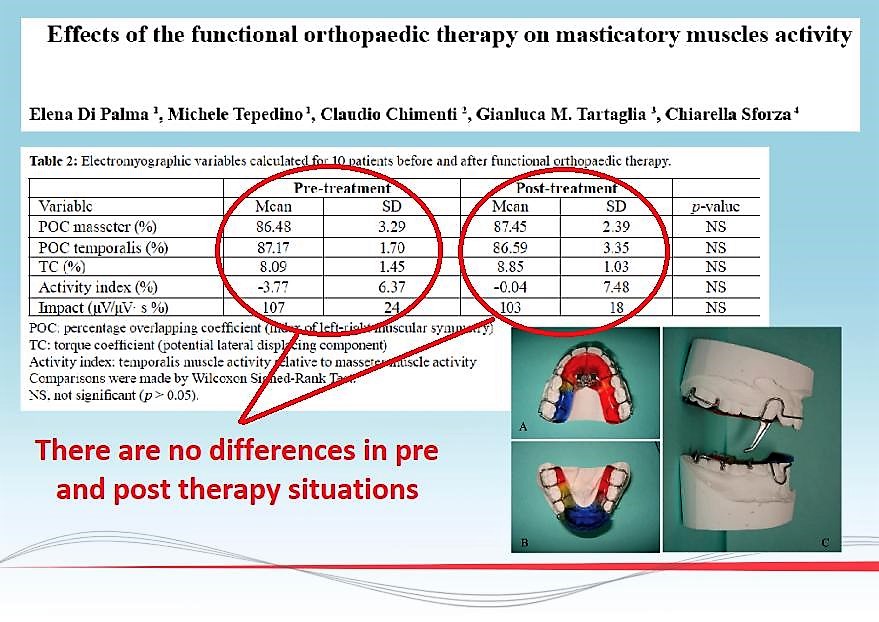Can orthodontic therapies that alter occlusion respect the neuromuscular balance of patients?
Title:
Effects of the functional orthopaedic therapy on masticatory muscles activity
Background:
The purpose of this study was to examine surface electromyographic (sEMG) activity of masticatory muscles before and after functional orthopaedic therapy with Sander appliance.
Material and Methods:
Ten adolescents (5 girls, 5 boys) with an Angle Class II, division I malocclusion, 9-13 years old, were submitted to sEMG before and after functional orthopaedic therapy. To verify the neuromuscular equilibrium, the standardized EMG activities of right and left masseter and anterior temporal muscles were recorded during maximum voluntary clench, and analysed calculating: POC (index of the symmetric distribution of the muscular activity determined by the occlusion); TC (index of presence of mandibular torque) and Ac (index suggesting the position of occlusal barycentre). The total muscular activity was also calculated. Pre- and post- functional therapy data were compared with Wilcoxon Signed-Rank Test.
Results:
Before treatment, all subjects had a good neuromuscular equilibrium, which was not altered by treatment.
Conclusions:
sEMG evaluations allow to quantify the impact of occlusion on masticatory muscle activity and to control that the functional orthopaedic therapy maintain a good muscular coordination.
Practical tip:
Even in orthodontic therapies that alter occlusion, it is possible to respect the neuromuscular balance of patients.

